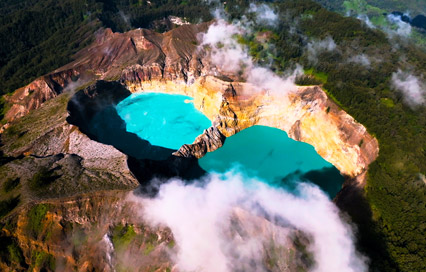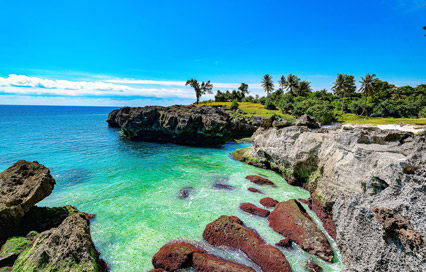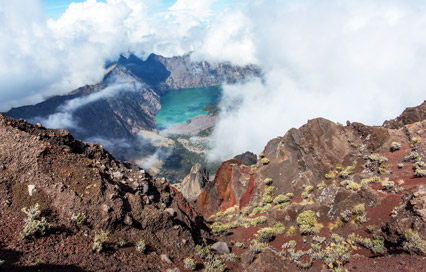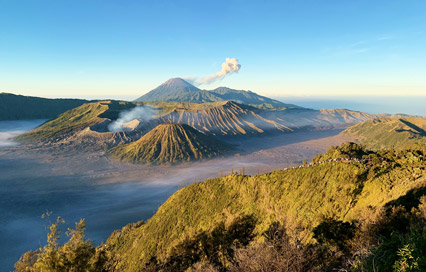Unlocking the Mysteries of Elephant Cave Ubud: A Traveler's Guide
June 19, 2025
Nestled just a short drive from the cultural heart of Bali, the Elephant Cave Ubud, or Goa Gajah, is an archaeological wonder that beckons travelers into a world of ancient mystery and spiritual tranquility. Far more than just a cave, this sprawling 9th-century sanctuary is a mesmerizing blend of Hindu and Buddhist history, intricate stone carvings, and lush, jungle-like scenery.
Despite its name, you won't find any living elephants here. The name's origin is a mystery itself. Some believe it comes from the stone statue of the elephant-headed Hindu god, Ganesha, found inside the cave. Others suggest it was named after the nearby Petanu River, once called the "Elephant River". Whatever its origin, Goa Gajah offers a fascinating window into Bali’s rich spiritual past, making it a must-visit on any Ubud itinerary.

Mysteries of Elephant Cave Ubud
What to Expect on Your Visit
A trip to the Elephant Cave Bali is a journey through layers of history and nature. The complex, which was rediscovered by Dutch archaeologists in 1923, is much larger than its name suggests, featuring sacred pools, ancient relics, and serene walking paths that lead to a waterfall.
The Menacing Entrance The most iconic feature of Goa Gajah is its entrance. You'll enter the cave through the gaping, open mouth of a fearsome-looking demon carved directly into the rock face. Surrounded by intricate carvings of mythological figures, leaves, and animals, this entryway was believed to ward off evil spirits and protect the sanctity of the sanctuary within.
Inside the T-Shaped Cave Once you pass through the demon's mouth, you'll find yourself in a small, T-shaped cave. The air is often thick with the sweet smoke of burning incense, creating a deeply spiritual atmosphere. Inside, you will find niches likely used for meditation by ancient priests and several stone idols. The main features are a statue of the Hindu god Ganesha and three lingam and yoni structures, which symbolize the Hindu god Shiva and the feminine divine. The presence of both Hindu and Buddhist imagery, including a statue of the Buddhist goddess Hariti elsewhere in the complex, highlights the island's unique spiritual history.
The Sacred Bathing Pools Just outside the cave lies one of the site's most beautiful features: two sacred bathing pools. These pools, which were not unearthed until the 1950s, are decorated with seven large statues of women holding water pitchers. These figures are believed to represent the seven holy rivers of India, including the Ganges, and were likely used for ritual purification ceremonies.
The Serene Jungle Complex Don't stop at the cave and pools. The complex extends into a lush, green valley filled with ancient trees, stone relics, and quiet walking paths. Follow the stairs down, and you will discover a peaceful garden area, a tranquil pond, and even a small waterfall where you can cool off.

T-Shaped Cave
Practical Information for Your Visit
To make the most of your trip to this UNESCO World Heritage tentative site, it helps to plan ahead.
Detail | Information | Pro Tip |
Location | Bedulu Village, Gianyar Regency. About a 15-minute drive from central Ubud. | Combine your visit with other nearby Ubud attractions like the Tegalalang Rice Terraces. |
Opening Hours | Daily from 8:00 AM to 4:00 PM. | Arrive early in the morning (8-10 AM) to enjoy cooler weather and fewer crowds. |
Entrance Fee | Approx. 50,000 IDR for adults, 25,000 IDR for children (includes sarong rental). | Bring cash (Indonesian Rupiah) as there are no ATMs on site. |

Dress Code As Goa Gajah
Tips for a Great Experience
- Respect the Dress Code: As Goa Gajah is an active place of worship, you must dress modestly. A sarong is required to enter. While one is included with your ticket, be aware that vendors in the parking lot may try to sell you one. You can politely decline, as one will be provided at the entrance.
- Mind the Stairs: Be prepared for a walk. To reach the main complex from the parking area, you'll need to descend a long flight of stairs.
- Consider a Guide: Local guides are available and can offer deep insights into the site's history and symbolism. However, be sure to agree on the price before starting the tour, as costs can be high.
- Best Time to Go: The best time to visit Bali is during the dry season, from April to October. This ensures a more comfortable experience exploring the outdoor complex.
Why is it called Elephant Cave if there are no elephants?
The name is not literal. It is believed to have originated from either the stone statue of the elephant-headed god, Ganesha, inside the cave or from the nearby Petanu River, which was once known as the "Elephant River".
What should I wear to visit Elephant Cave Ubud?
You should wear modest clothing that covers your shoulders and knees. A sarong is mandatory for entry and is included with your ticket, so you don't need to buy one beforehand.
What is the entrance fee for Elephant Cave?
As of early 2025, the entrance fee is approximately 50,000 IDR for adults and 25,000 IDR for children. This fee includes the rental of a sarong.
How much time do I need at Goa Gajah?
Most visitors spend about an hour exploring the main cave, bathing pools, and surrounding gardens. If you want to walk down to the waterfall and fully immerse yourself in the serene atmosphere, allow for up to 90 minutes.
Before you can step through the mystical mouth of the Elephant Cave Ubud and explore its ancient secrets, your journey begins with ensuring your travel plans are in order. For many international visitors, this means getting your travel documents in order by securing a visa for Indonesia. Navigating this process can feel overwhelming, but services like GVC are designed to make it simple and transparent. You can start your application online through their clear, user-friendly platform, freeing you up to focus on the exciting parts of your trip. To help you budget effectively, you can check the visa service pricing upfront, so there are no surprises along the way. Once submitted, you can put your mind at ease and track your application’s progress online for complete peace of mind. Using a trusted service ensures your adventure in Bali starts smoothly.
Related Articles:
- Top Resorts In Ubud: Unveiling Paradise In Balis Cultural Heart
- The Ultimate Guide To The Best Places To Visit In Bali Indonesia
- Explore Bali: Places To Visit For An Unforgettable Getaway
- The Best Attractions In Bali Indonesia For Your Bucket List
- The Best Places To Visit In Bali For First Timers Ultimate Guide
- Bali Indonesia Rice Terraces: The Islands Emerald Wonders
- Best Things To Do In Bali For An Endless Vacation
Tags




